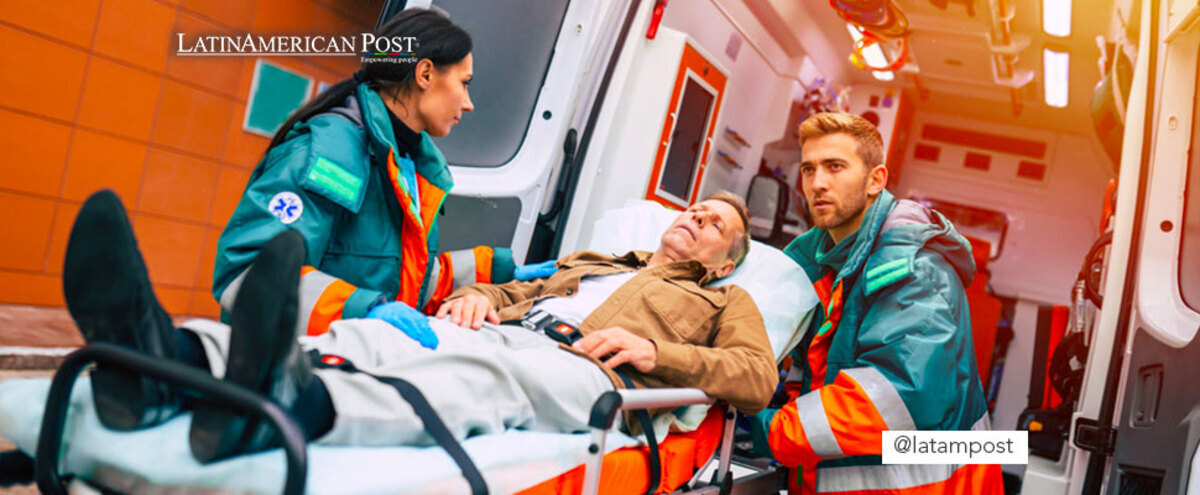How To Handle Medical Emergency Situations
Medical emergencies are a matter of life and death. They often occur as you go on with your daily life, for instance, at work or home. When they happen, it’s best to respond quickly and help avert the situation. It may save lives and reduce the effects of accidents or emergencies.

Cynthia Gonzales
Escucha este artículo
Note that every response depends on the type of emergency. Response to a stroke may not be the same as handling an accident. If you don’t do it right, you might end up causing further injuries to the victim. That said, here’s how to handle medical emergencies:
-
Offer First Aid
Familiarizing yourself with first aid basics comes in handy. That’s why most companies ensure they’ve trained their employees to handle workplace emergencies. One significant way to stay prepared for emergencies is to keep a first aid kit, which should include the following items:
-
Bandages
-
Gloves
-
Aspirin or painkillers
-
Cold packs
-
Scissors
-
Safety pins
-
Tweezers
These tools come in handy when you need to respond to an emergency. You should regularly check the kit to ensure all the supplies are replenished. It helps avoid a situation where you hope to use the first aid kit only to find that it doesn’t have the necessary equipment.
Moreover, read the instructions on how to use the said tools. Most kits come with instructional info on how to use the said items. Getting some training on handling the first aid kit is best. This way, you prevent hurting yourself or others around you as you offer immediate care.
-
Stay Calm
When emergencies happen, it’s best to stay calm. Acting nervous can take a toll on the injured person. If you’re anxious, step aside and take a deep breath to relax your mind, and you’ll be able to contain the situation. Once you’ve collected yourself, that’s time to take action. This way, you can properly perform the necessary first aid procedures and avoid exacerbating the situation.
-
Call For Help
Even if you give the injured person first aid care, it’s essential to call for medical assistance. They’ll need additional medical attention to stay clear of danger. You can call a medical response team or an emergency hotline, who’ll come with an ambulance equipped with the necessary tools and supplies.
Once help arrives, explain to the paramedics all you’ve done to the injured person. It helps them determine their next course of action. They can also assess whether there’s a need for further treatment. In most cases, they suggest that the injured person undergoes a thorough check-up to ascertain that they’re not exposed to more danger, such as internal bleeding.
Depending on the magnitude of the injury, they may request advanced medical procedures, such as screening and X-rays. However, this depends on the doctor’s suggestion and recommendation.
Read also: Vaccines Against Cancer: An Increasingly Closer Reality
-
Give CPR To The Patient
You can perform cardiopulmonary resuscitation (CPR) if the patient isn’t breathing normally. It’s best for emergencies where the patient has been injured and is lying breathless on the ground. You can blow air through their mouth, but you need to ensure their airway isn’t restricted or blocked. It allows air to reach the lungs and supply oxygen to the blood.
In most cases, CPR is offered in emergencies involving suffocation. Put the patient in a position that improves the situation. One common mistake most people make is placing the head in a raised position instead of the legs. If you raise the legs, the blood flow improves, and there’s enough oxygen in the head, improving their breathing ability. You can learn these tactics in emergency response training to reduce the chances of putting the patient at risk.
-
Ensure The Injured Person Is In A Safe Space
When an accident happens, the first order of business should be to move the person to a safe environment. However, you should proceed with caution to prevent further damage. If there’s no stretcher around, ask for help from others to carry the injured person safely. Note that it’s only best to evacuate the person if the environment causes threats.
Conclusion
When emergencies happen, responding swiftly and correctly helps take charge of the situation. This way, you’ll save someone’s life and prevent severe injuries from occurring. If you don’t know how to handle the situation, call for help. Don’t make the mistake of doing anything that’d only worsen the patient’s suffering. However, if you’ve got the basic skills to salvage the situation, it’s best to administer first aid as you wait for medical assistance, allowing you to save a life.




